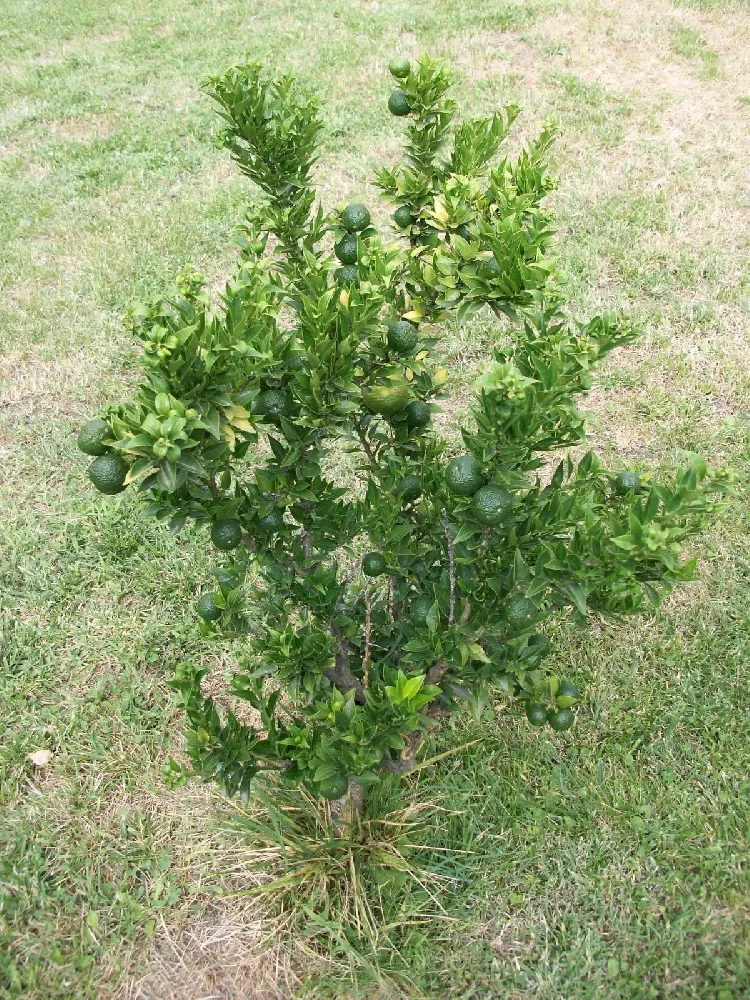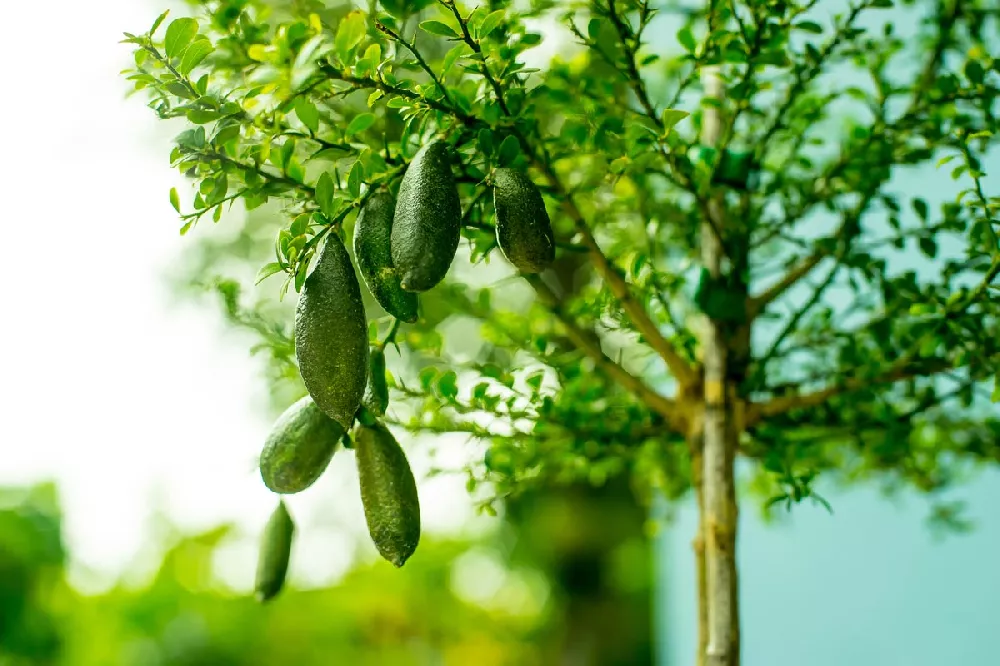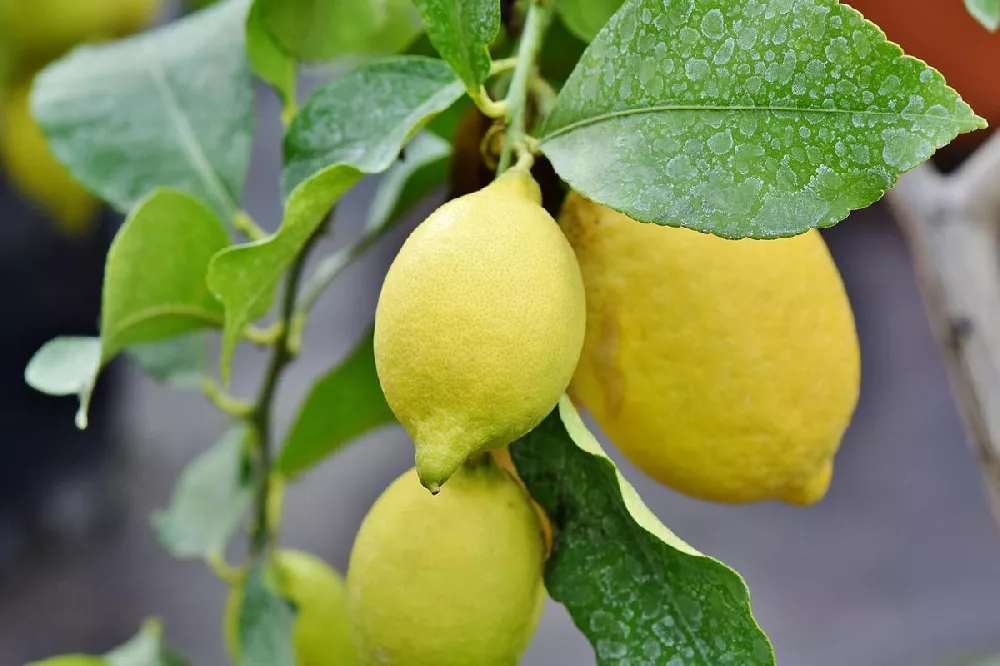- Home >
- Edible Plants >
- Calamondin Orange Tree
Calamondin Orange Tree for Sale - Buying & Growing Guide
- Ships in 1-2 days
- 1-Year Warranty Eligible
- Pots or accessories are not included unless specified in the product options.
Shipping Details:
Products shipped through FastGrowingTrees.com. Once your order is shipped, you’ll receive an email with a tracking number and estimated delivery date. Most orders will ship immediately.
The calamondin orange tree, Citrus mitis, is a small citrus tree that is a natural hybrid of mandarins and kumquats. Although grown mostly for ornamental purposes, calamondin orange trees produce small (1 inch in diameter) acidic fruits that can be used in jams and jellies or eaten off the tree. Calamondin orange trees are delightful additions to the garden or patio, maxing out at about 8 to 10 feet tall with a spread of 5 feet. They are hardier than many types of citrus, down to 20 degrees Fahrenheit, and can be grown as patio plants in the northern parts of the U.S. Here are some other reasons to grow a calamondin orange tree:
- Self-fertile trees will produce fruit even if you only have one tree.
- Easy to care for, with few diseases or animal and insect pests.
- Flowers and fruit appear at any time, meaning that the tree's ornamental appeal lasts throughout the year.
Plant Care
Sunlight

Calamondin orange trees benefit from full sun — at least six to eight hours of direct light a day.
Watering
Once established, water your tree whenever the soil 2 inches below the surface is dry.
Fertilizing

Fertilize your calamondin orange tree throughout the growing season with a product designed for citrus trees.
Planting and Care
Planting instructions
Site your calamondin orange treeOrange Tree where it will get at least six hours of sun a day, in soil that drains well. Unpot the plant, and tease out any encircling roots, which can girdle the tree and slowly kill it. Dig a hole that’s as deep as the root ball and twice as wide. Place the tree in the hole, and, while holding it upright, fill in around it with good quality topsoil, tamping down as you go to eliminate air pockets. After planting, water thoroughly. Add a 2- to 3-inch layer of an organic mulch, such as bark chips, around the root zone, but don’t let it touch the trunk itself.
Watering and nutrients
Pollination
Calamondin orange trees are self-fertile, or monoecious, meaning that a single tree has both male and female reproductive parts. You may increase your harvest if you have more than a single tree, however. Insects such as honeybees are the primary pollinators, so if you wish to have fruit, put your container-grown trees outside when they start flowering in spring.
Pruning
Remove dead, damaged, or diseased branches whenever you see them on your calamondin orange trees. You can also remove interior limbs to open up the canopy so that it can get more light. If you are pruning to control growth, cut back to a lateral branch rather than just trimming off the ends of the branches. Some gardeners grow calamondin orange trees as bonsai, which uses extreme pruning techniques to keep the tree only a foot or two tall. Container-grown trees, however, can be easily limited to 5 to 6 feet without specialized pruning techniques.
Pests and diseases
Not many insects prey on the calamondin orange tree. Be on the lookout for red spider mites, whiteflies, scale insects, and mealybugs when growing the tree indoors. All can be dealt with by using a general-purpose insecticide. You’ll also have fewer issues if you wipe down the leaves every month or so to keep dust from settling and providing a haven for insects. Outdoor plants may be susceptible to diseases such as botrytis rot and anthracnose, which are both fungal in origin. A healthy plant can push back infection, but a fungicide can also help to keep your trees fungus-free.
Harvesting
Calamondin orange tree fruit can take up to a year to ripen, and fruits often appear on the tree at the same time as the flowers. Harvest when they are just starting to turn orange and allow them to further ripen off the tree. If you squeeze the fruit, it should be firm — if it is soft, it may be overripe. Although fruit can appear any time, harvest is most abundant between November and early summer, with the sweetest fruit available near the end of the harvest season.
Achieving maximum results
If you live in the northern U.S., you will need to grow your calamondin orange tree in a container. Choose an ornamental pot that is about twice the size of the root ball, and plan on repotting it into a slightly larger pot every two or three years. Once your tree reaches a size that is right for your home, you can prune it back to maintain that height. Minor root-pruning can help, too, to keep it consistently sized. Although calamondin orange trees are hardy down to 20 degrees Fahrenheit, bring your tree inside once the temperatures falls below the 50s on a regular basis. Monitor your tree’s watering needs carefully. When the soil is dry 2 inches below the surface, give it a thorough watering, being sure that the drainage holes allow the water to drain away as needed.
FAQs
How can I use the fruit of the calamondin orange tree?
Calamondin orange tree fruits are best used within a week of picking. The fruits are sometimes juiced and used as you would lemon or lime juice in cooking or to make a refreshing drink. They can also be used in desserts, gelatins, jellies, or in any recipe that calls for lemon or lime juice. The juice can be used as a clarifying hair rinse, and rubbing it on insect bites alleviates itching. Although the raw flavor is somewhat tart, you can also eat them right off the tree.
How tall do calamondin orange trees get?
The maximum height of a calamondin orange tree is between 10 and 12 feet, but it's not difficult to keep container-grown plants shorter through judicious pruning of both branches and roots. An indoor plant can easily be constrained to a height of 4 or 5 feet to enable it to be easily moved to a patio or backyard in the summer.
How do I take care of my container plant during the winter?
If you bring your calamondin orange tree inside during the winter, place it by a bright sunny window where it can get as much sun as possible. Fertilize lightly during winter months, using a half-strength portion of a water-soluble product designed for citrus trees every six weeks. Wiping down the leaves regularly will keep away mite and scale infestations, and a light misting of the leaves every few weeks will help them retain humidity. Water when the soil is dry 2 inches below the surface, but don't allow the tree to stand in a puddle.
Compare Similar Products
Customer Reviews
 Calamondin tree
Calamondin treeMy tree came in great shape!
You can't add more Product Name - Product size to the cart.
OK








